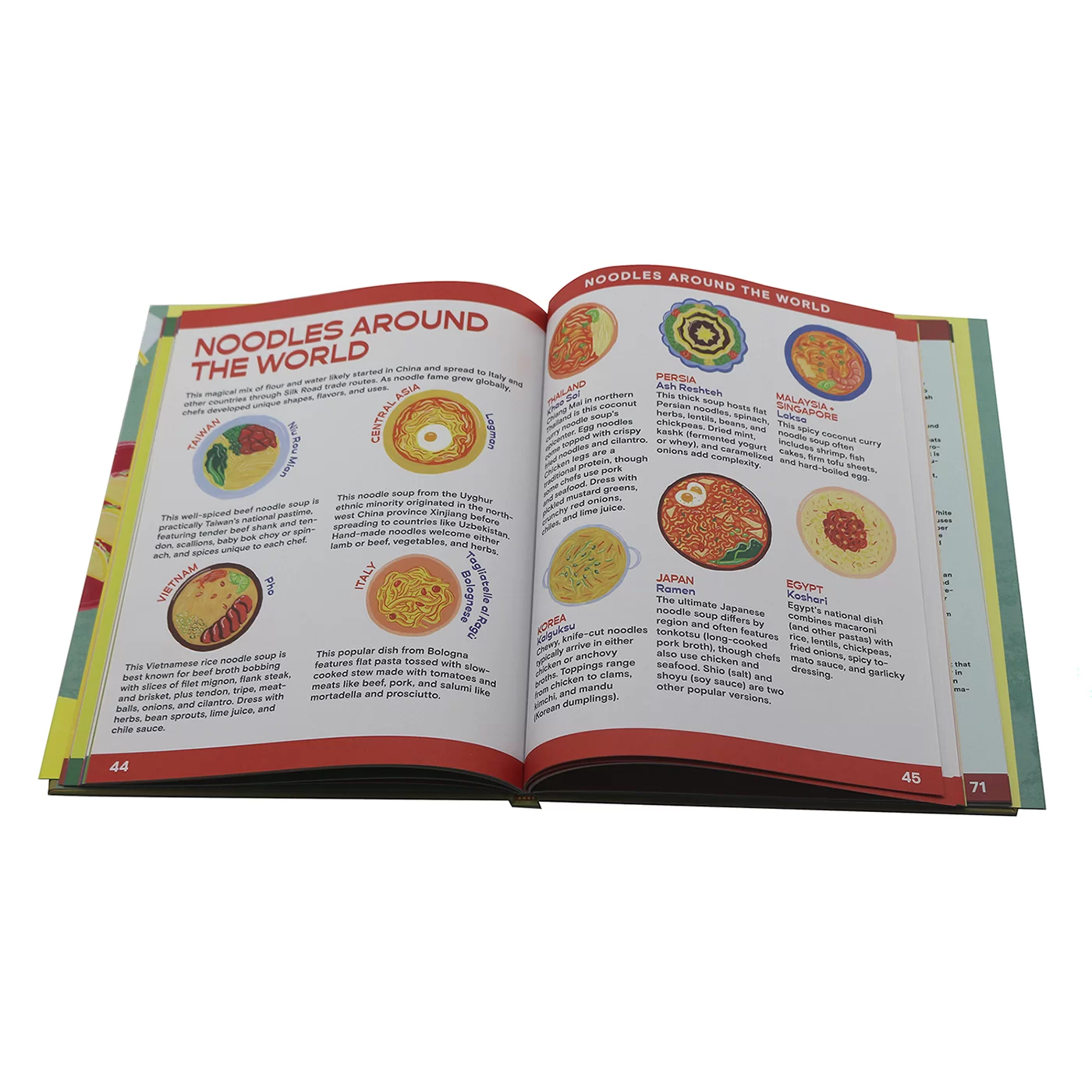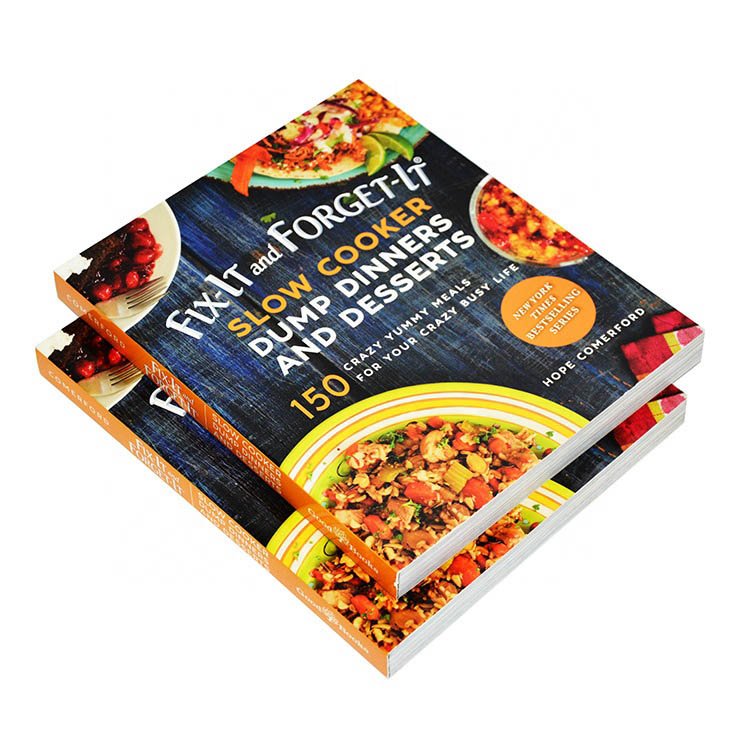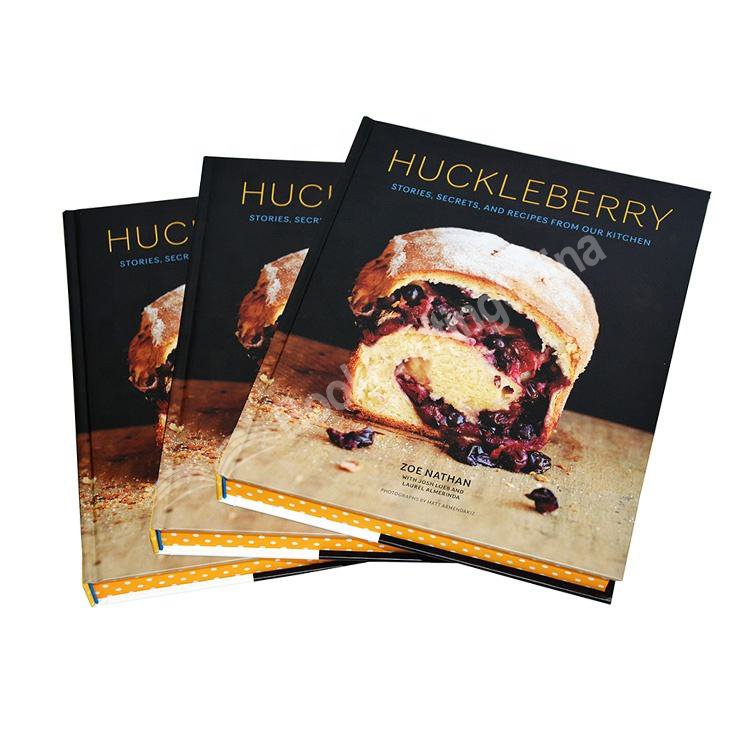Contact Us
(888) 595-0219
Liberty Plaza 165 Broadway Lower Manhattan, 7th Floor, NY, 10006, USA
Cookbook Printing

High Quality Cook Book Printing
Cookbooks are more than just collections of recipes; they are valuable resources that allow people to share their culinary expertise and inspire others in the kitchen. We provide various of high quality cookbook printing services at a lowest price, such as spiral bound cookbook printing, hardcover cookbook printing, family cookbook printing, personal cookbook printing, children cookbook printing, etc.
- ☑ Competitive price
- ☑ A wide range of customized options
- ☑ Professional quality printing
- ☑ Truly customer-centric customer service
- ☑ Fast delivery
- ☑ Worldwide shipping
If you're considering publishing your own cookbook, it's important to understand the various aspects of cookbook printing to ensure a high-quality and visually appealing end product. Following, we will explore the key elements of recipe book printing, including paper stock and weight, popular sizes, binding options, surface finishing techniques, as well as design and printing artwork tips.
Paper Type of Cookbook Printing
When custom cookbook printing, choosing the right paper stock and weight is crucial to achieving a professional and durable result. The paper stock refers to the type of paper used, while the paper weight determines its thickness and sturdiness. For cookbooks, it is recommended to use a thicker and more durable paper to withstand frequent use in the kitchen.
Cover material

One of the most commonly used materials for cover of custom cookbook printing is paper. We offer a wide range of paper options, such as coated paper, special paper and more. Coated paper is known for its smooth and glossy finish, which gives the books a sleek and modern look. On the other hand, special paper offers a unique texture and can be customized with various patterns or designs to add a personal touch to the book cover.
When selecting the paper material for your recipe book cover, it is important to consider the weight and thickness of the paper. A heavier and thicker paper will provide better protection for your books.
For those looking for a more elegant and luxurious option, we also offer cloth materials for custom your cook book cover. Our cloth materials come in a variety of colors and textures, allowing you to choose the perfect option to complement your book’s design.
If you’re seeking the ultimate in luxury and durability, leather covers are the perfect choice. Made from premium quality faux leather or leather, these book covers exude elegance and sophistication. Leather covers are not only visually striking but also offer superior protection for your books.
Interior paper
For interior paper stock, to perfect restore your recipe, Prime Printings usually recommend coated paper for printing a cookbook, such as matte, gloss. Matte paper provides a smooth and non-reflective surface, while gloss paper offers a shiny and vibrant look. The choice depends on your desired aesthetic and the overall theme of your cookbook.
 |
 |
 |
| Glossy art paper | Matte art paper | Uncoated paper |
As for paper weight, it is advisable to opt for a heavier weight paper to prevent pages from tearing or curling easily. A weight between 71-106 lb (or 105-157 gsm) is typically suitable for cookbook printing. This ensures that the pages are sturdy enough to withstand frequent handling, while still maintaining a comfortable thickness.
Hardcover
- 157gsm/58 lb coated cover paper wrapped on 2mm/2.5mm/3mm gray board
- Other material, like leather, linen wrapped on 2mm/2.5mm/3mm gray board
| Soft cover | Interior paper |
|
|
|
|
|
|
|
|
CookBook Sizes
Choosing the right size for your cookbook is essential for both aesthetic appeal and ease of use. The most popular sizes for cookbook printing are typically 8.5" x 11" (letter size) or 85" x 8.5" (standard size). These sizes provide ample space for recipes, instructions, and accompanying images, while remaining practical and easy to handle.
Consider the nature of your recipes and the type of content you plan to include when selecting the size for your cookbook. If your recipes are more complex and require detailed instructions, a larger size may be more appropriate to accommodate the additional information. On the other hand, if you plan to create a more compact and portable cookbook, a smaller size may be a better fit.
Some popular size for cookbook printing
- 8.5" x 8.5"
- 8.5" x 11"
- 11" x 11"
Cookbook Binding Methods
The choice of binding method plays a crucial role in the overall presentation and durability of your cookbook. There are several popular binding options to consider, each with its own advantages and aesthetic appeal.
 Perfect binding
Perfect binding
Perfect binding is a widely used method for paperback cookbook printing. It involves gluing the pages together along the spine, creating a clean and professional look. This method provides a clean and professional look, making it easy to appeal the readers.
 Hardcover binding
Hardcover binding
If you want to create a more luxurious and durable cookbook, hardcover binding is an excellent option. Hardcover books provide added protection to the pages and lend a sense of sophistication to your cookbook. They are particularly suitable for cookbooks that are meant to be cherished and passed down through generations.
 Spiral/wire-o binding
Spiral/wire-o binding
Spiral or wire-o binding is a practical choice for cookbooks that need to be opened and laid flat on a countertop. This binding method involves inserting a metal or plastic coil through holes punched along the edge of the pages. Spiral-bound cookbooks are easy to handle and allow for effortless page-turning, making them ideal for use in the kitchen.
Finish Options of Cookbook Printing
To add that extra touch of elegance and visual appeal to your cookbook, consider incorporating surface finishing techniques. These techniques not only enhance the overall look of your book but also provide added protection to the cover.
Matte or gloss lamination
Lamination involves applying a thin layer of plastic film onto the cover of your cookbook. Matte lamination provides a smooth and non-reflective finish. While gloss lamination offers a shiny and vibrant appearance. Both options protect the cover from scratches, stains, and general wear and tear.
Spot UV
Spot UV coating involves applying a glossy varnish to specific areas of the cover, creating a contrast between matte and glossy finishes. This technique can be used to highlight specific elements, such as the title or images, giving your cookbook a visually striking and professional look.
Embossing or debossing
Embossing and debossing techniques add texture and depth to the cover of your cookbook. Embossing raises certain elements, such as the title or images, while debossing creates a depressed or indented effect. These techniques not only add a tactile element but also create a visually appealing design that captures attention.
Foil Stamping
Foil stamping involves applying a thin layer of metallic or colored foil to the cover of the book using heat and pressure. It adds a luxurious and elegant touch to the design. Foil stamping is often used for titles, borders, or decorative elements.
Artwork Tips of CookBook Printing
The design and printing artwork of your cookbook are crucial in captivating readers and reflecting your culinary style. Here are some tips to ensure a visually appealing and well-designed cookbook:
Visual hierarchy: Establish a clear visual hierarchy by using varying font sizes, bold or italicized text, and color contrast. This will help readers navigate through your cookbook and easily locate important information.
High-quality images: Invest in high-quality food photography to showcase your recipes in the best possible way. Clear, vibrant, and appetizing images will entice readers to try out your recipes and enhance their overall cooking experience.
Consistent branding: If you have an established brand or culinary style, incorporate it into your cookbook design. Consistent branding elements, such as colors, fonts, and logos, will create a cohesive and recognizable visual identity.
Proofreading and editing: Before sending your cookbook to print, thoroughly proofread and edit the content to ensure accuracy and consistency. Typos and errors can be distracting and diminish the overall quality of your cookbook.
Watch below video to learn about the industard standard of cookbook printing, include: size, paper type, binding, add ons and file requirements.
Ready to bring your cookbook to life? Contact Prime Printings, the leading cookbook printing company, to discuss your printing needs and get started on your culinary masterpiece.

















